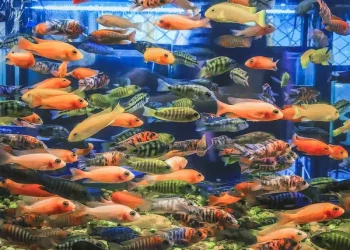Lungfish are a unique group of fish known for their ability to breathe air and survive in harsh environments. They are also known for their ability to survive long periods without food. In this article, we will explore how long lungfish can go without eating and how they are able to survive for extended periods without food.
Types of Lungfish
There are two main types of lungfish: African and South American. Both types of lungfish have specialized adaptations that allow them to survive in their respective habitats. African lungfish, for example, are found in freshwater habitats in Africa and are known for their ability to survive in drought conditions. South American lungfish are found in the freshwater habitats of South America and are known for their unique feeding behavior of crushing snail shells.
How Long Can Lungfish Go Without Eating?
Lungfish are able to survive for extended periods without food by entering a state of torpor or dormancy. This is a state of reduced metabolic activity that allows the lungfish to conserve energy and survive without food.
African lungfish are known to survive for up to three years without food. During drought conditions, they will bury themselves in the mud and secrete a mucus cocoon around their body. This cocoon protects them from predators and allows them to conserve water and energy. When the drought ends and water returns, the African lungfish will emerge from their cocoon and resume feeding.
South American lungfish, on the other hand, are not known to enter torpor for extended periods. However, they have been observed to go without food for up to six months. During this time, they will conserve energy and survive on stored fat reserves.
How Do Lungfish Survive Without Food?
Lungfish are able to survive without food for extended periods by conserving energy and using stored fat reserves. During torpor, their metabolic rate slows down, and their body temperature drops. This reduces the energy required to maintain bodily functions and allows the lungfish to survive without food.
In addition to torpor, lungfish have other adaptations that allow them to survive in harsh environments. For example, their ability to breathe air allows them to survive in stagnant water with low oxygen levels. They also have a strong immune system that helps them resist infections and diseases.
In conclusion, lungfish are remarkable fish with unique adaptations that allow them to survive in harsh environments and go without food for extended periods. Their ability to enter torpor and conserve energy is a survival strategy that has allowed them to survive for millions of years. By studying their adaptations, we can gain insight into the evolution of fish and the importance of biodiversity.


























